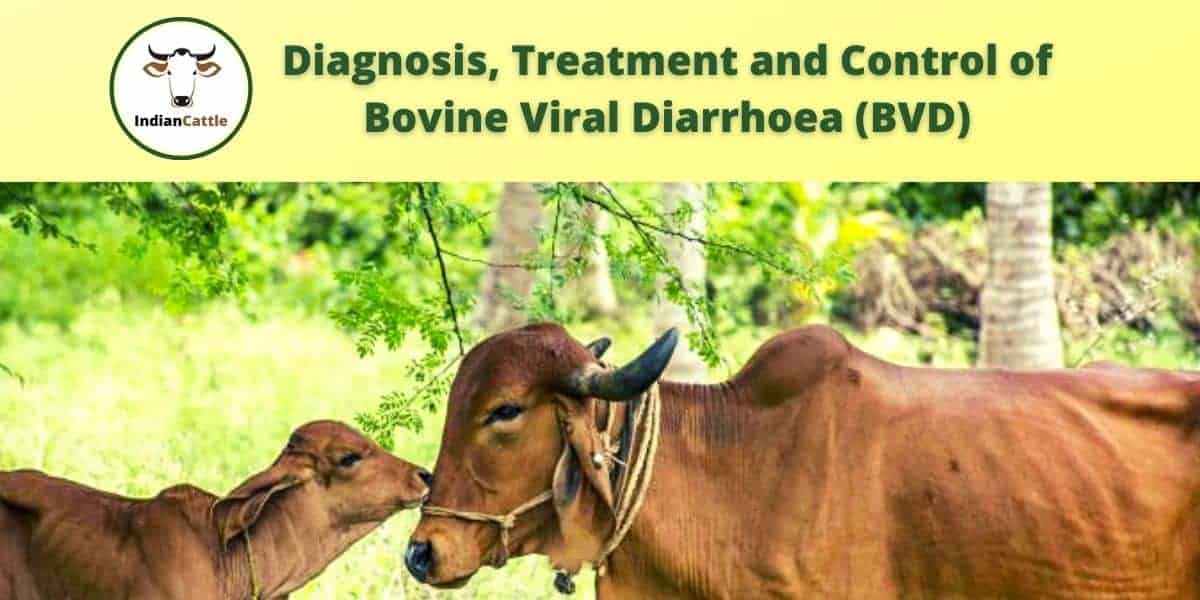
Diagnosis, Treatment and Control of Bovine Viral Diarrhoea (BVD)
Bovine Viral Diarrhoea (BVD) or Mucosal Disease is a highly contagious disease of cattle. It is an economically important disease and found throughout the world.
Cause of disease BVD: The cause of the disease is “Bovine Viral Disease Virus”. It is a virus like rinderpest
Animals Affected: Cattle and other ruminants. Growing and Young cattle are more susceptible.
Spread of the Disease: Direct and Indirect contacts, which includes visitors, ingestion of contaminated feed with faecal matter, urine and nasal discharge.
Incubation period: The incubation period varies from one to two weeks.
Clinical Signs: The clinical signs varies depending on the immune status of the animals, the extent of exposure, and the virus strain. Clinical signs of acute infection include moderate fever for a few days, profuse diarrhoea, and severe dehydration, defuse erosive stomatitis, skin lesions, lethargy, loss of appetite, and death may occur within 7-10 days.
Chronic infection includes inappetence, scanty and soft faeces, intermittent bloat and non-healing skin lesions, particularly in inter-digital space.
In calves, the most commonly found birth defect and cerebral hypoplasia. In severe cases calves may die also.
Differential Diagnosis: Foot and Mouth Disease, Rinderpest. Vesicular Stomatitis
Complications and Sequele: Congenital defects, in cow ocular defects, musculoskeletal deformities and alopecia.
Specimen for laboratory investigations: Paired sera samples
Diagnostic Tests: A. G. P. T., Complement fixation and PCR
Treatment: No specific treatment, only supportive therapy should be given. The treatment is costly. But once BVD identified the infected animals should be culled.
Vaccine: In some countries vaccines for BVD are available, modified live virus vaccine and killed virus vaccines are available. But these vaccines are costly. The disease is not yet officially reported in India hence vaccine is not available.
Prevention, Control and Management of BVD Disease
- Adopt strict biosecurity measures on the farms.
- Remove all positive reactors from the herd,
- Quarantine the newly purchased stock of animals away from the herd for two weeks.
- Provide a balanced diet regularly to maintain the immunity of animals.
- If possible, vaccinate the animals for BVD.
| Dr. V. M. Bhuktar
Former I/c Joint Commissioner A. H. Western Regional Disease Diagnostic Laboratory (WRDDL) Pune M.S |
Dr. D. M. Chavan
Former Additional Commissioner of Animal Husbandary, Maharashtra |
